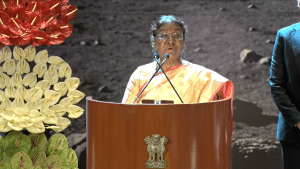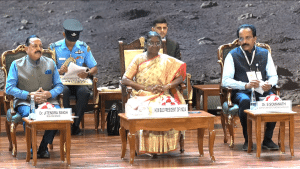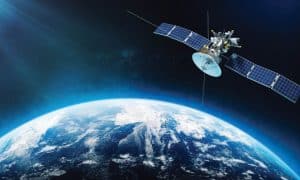The third panel discussion in the ‘Development of Space Start-ups Ecosystem in India’ (DeSSEI), a national conference organized by the Astronautical Society of India (ASI), was titled ‘Space economics viz., space transportation, space tourism, space material processing, space biotechnology and space-based services etc.’ and saw an eminent panel discuss the new frontiers provided by contemporary spaceflight. The panel was moderated by Prof. Kuruvila Joseph, Outstanding Professor and Dean, IIST.
Prof. Joseph began by emphasizing the critical role that space economy was to play in the Fourth Industrial Revolution (4IR) and underlined how the particular theme was of great importance.
Speaking on how IN-SPACe could boost space economy, Rajeev Jyoti, Director-Technical, IN-SPACe, said, “ISRO (Indian Space Research Organisation) has already laid the foundation in terms of technology demonstration as shown by the milestones achieved. We have the human resources, expertise, and capital expenditure (capex) available. IN-SPACe is going to be a facilitator, hand holder, promoter, and authorizer.”
J. V. K. S. Prakasha Rao, Director, Space Infrastructure Programme Office, said, “If you want to be globally competitive, importance has to be placed on performance, quality, and reliability so that we are able to take on-time delivery at reduced costs. The bottlenecks for the space sector are actually opportunities for private businesses.”
On what could be done to realize those opportunities, Rao said, “We have to develop islands of expertise that would connect to the mainland of launch vehicle or spacecraft manufacturing — with respect to space infrastructure.”
The space sector is closely intertwined with geospatial economy, another sector that has witnessed pathbreaking reforms in recent times. Dr. S. Murali Krishnan, Deputy Director, National Remote Sensing Centre, ISRO, listed the various applications of space research that contributed to geospatial data gathering. “If you look at geospatial data today, it reaches almost everybody,” he said.
“The key is DIKW — Data, Information, Knowledge, and Wisdom. It creates value, both tangible and intangible,” added Dr. Krishnan, emphasizing that the data, information, and knowledge part needed to be concentrated upon, quoting insights from the Geospatial Artha report that was released in 2021.
Alok Medikepura Anil, Director, Next Big Group, spoke on the economic aspect of space and 3D bioprinting applications therein. He said, “We’re looking at creating live tissues, potentially tissues going into organs, with the final goal of transplanting these tissues for human use cases.”
“Due to innovations in material science research, engineering, as well as the resolution that we’re able to reach today, we’re at a comfortable point where we can manufacture tissues but not organs. The challenges that we foresee for the industry is in terms of the resolution, getting finer resolution — probably three microns, as the capillaries in our bodies can be as tiny as that. We’re also looking at increasing the speed of bioprinting.”
“The advantage of carrying out any 3D bioprinting experiment is the advantage of microgravity,” Alok added.
With their different backgrounds, the panelists were able to highlight the diverse benefits that space in general, and astronautics in particular, could bring to the table. The session epitomized the ubiquity of space applications in the everyday lives of people and the scientific, economic, and social progress of humankind.








